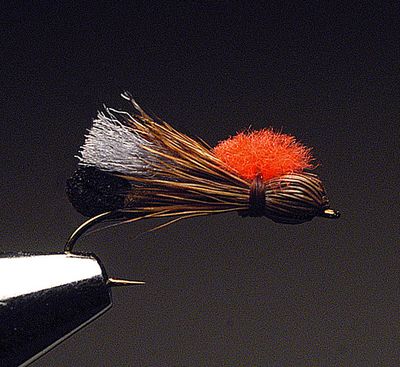Skwala: lean, lively stonefly
Tying easier than timing hatch

“You should have been here last week!”
“I think the hatch will start in about a week, depending on the weather.”
That seems to be the normal conversation fly fishermen have when chasing the elusive salmon fly hatch.
I have been fortunate enough in the many years I have fished to find myself in the middle of some stonefly hatches, both salmon flies and skwalas. But it’s rare.
Following a stonefly hatch report from reliable friends, I once beelined to the Deschutes River for the best four days of fishing I have had. Those big red-sides just smashed the salmon fly imitations we were throwing at them.
As long as we were able to stay in the middle of the hatch or just ahead of it, the fishing was great. If you got below the area where the hatch was happening, the fishing slowed dramatically. The hatch will move upstream following the warming water temperature.
The fish in the area where the hatch has already passed were gorged and not interested in eating no matter what pattern we used.
The skwala hatch on the Clark’s Fork River seems to happen just before spring runoff, so it’s somewhat easier to find. It’s already underway this year as you read this.
Skwala stoneflies are not as large as some salmon flies, but just as active and the trout take the skwalas just as readily. I have seen the skwalas so thick we would have to sweep them out of the doorway to our cabin before going in, or we would track skwala parts all over the floor.
Nothing puts a damper on a good fishing trip like upsetting the housekeepers.
A wide variety of skwala patterns have been conceived. I can’t recall the source for the one I list here, but I do know that it works, even when there’s no apparent stonefly activity.
The skwala stonefly has a distinct dark egg sack at the rear of the body. This pattern has that egg sack. Some others just have an extended body, but I am sure they will work just as effectively.
Most patterns are tied with foam somewhere in the body. I am not sure the foam is necessary, but as the saying goes, “If it’s not broken, don’t fix it.”
Almost all of the skwala patterns have a deer hair bullet head pulled back over the body. The deer hair tips will then become the over wing of the fly.
Pattern
Hook - Size and brand tiers choice. I like Daiichi #1260 sizes #8 through #12.
Thread - Brown 8/0 (70 denier).
Egg sack - Black foam.
Body - Dark brown or dark olive poly yarn or dubbing.
Underwing - Gray Antron yarn.
Overwing - Deer hair tips pulled back when forming the bullet head.
Head - Deer hair bullet head style.
Indicator - Bright poly yarn or foam.
Legs are also an option that can be added at this point. Either round rubber or Super Floss can be used for the legs.
Tying tips
Pinch the barb on the hook. Dress the hook shank with tying thread. Cut a small thin strip of black foam.
Fold it over itself forming a circle or egg sack. Tie this egg sack in at the rear of the hook.
Tie the body with the poly yarn or dubbing and wrap forward. Remember to leave enough room at the front of the hook for the deer head. Tie in the Antron yarn forming the underwing. This should extend to the top of the egg sack. Tie in the deer hair with the tips extending over the eye of the hook.
With your fingers or a tool, pull the hair back over the gray underwing. The deer hair tips should be slightly shorter than the underwing.
Tie the deer hair in place with several tight wraps of tying thread so the head will not rotate. Tie in the bright indicator at this same point.
The indicator is needed because the fly floats fairly low in the water. The optional legs can now be tied in at this same point is desired.
Last lines
The skwala hatch on the Clark Fork coincides with cold water temperatures. Wear a life jacket when floating. It won’t spare you the shock of cold water, but it will help keep you afloat in an emergency and give you a chance to make shore.